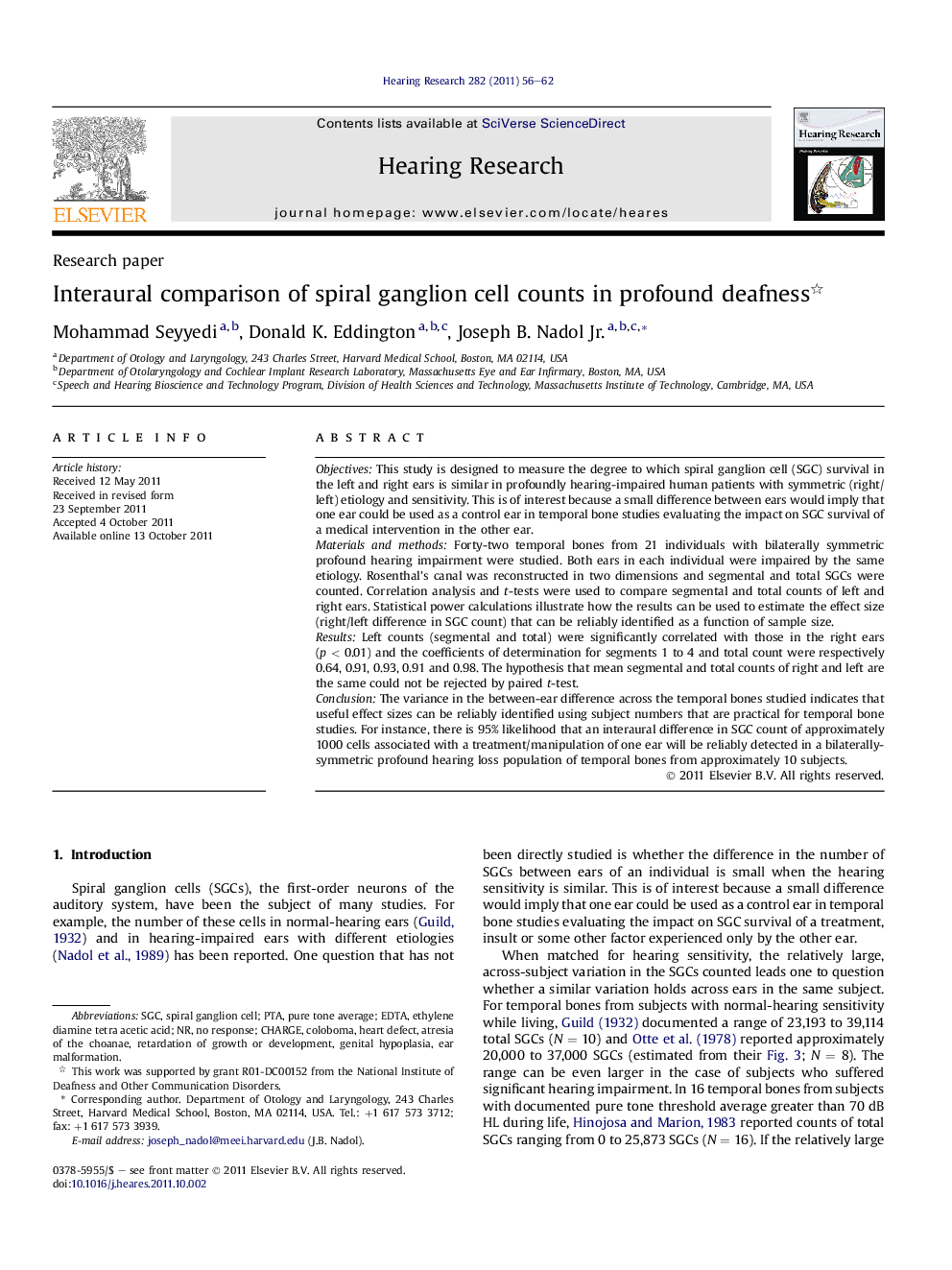| Article ID | Journal | Published Year | Pages | File Type |
|---|---|---|---|---|
| 4355422 | Hearing Research | 2011 | 7 Pages |
ObjectivesThis study is designed to measure the degree to which spiral ganglion cell (SGC) survival in the left and right ears is similar in profoundly hearing-impaired human patients with symmetric (right/left) etiology and sensitivity. This is of interest because a small difference between ears would imply that one ear could be used as a control ear in temporal bone studies evaluating the impact on SGC survival of a medical intervention in the other ear.Materials and methodsForty-two temporal bones from 21 individuals with bilaterally symmetric profound hearing impairment were studied. Both ears in each individual were impaired by the same etiology. Rosenthal’s canal was reconstructed in two dimensions and segmental and total SGCs were counted. Correlation analysis and t-tests were used to compare segmental and total counts of left and right ears. Statistical power calculations illustrate how the results can be used to estimate the effect size (right/left difference in SGC count) that can be reliably identified as a function of sample size.ResultsLeft counts (segmental and total) were significantly correlated with those in the right ears (p < 0.01) and the coefficients of determination for segments 1 to 4 and total count were respectively 0.64, 0.91, 0.93, 0.91 and 0.98. The hypothesis that mean segmental and total counts of right and left are the same could not be rejected by paired t-test.ConclusionThe variance in the between-ear difference across the temporal bones studied indicates that useful effect sizes can be reliably identified using subject numbers that are practical for temporal bone studies. For instance, there is 95% likelihood that an interaural difference in SGC count of approximately 1000 cells associated with a treatment/manipulation of one ear will be reliably detected in a bilaterally-symmetric profound hearing loss population of temporal bones from approximately 10 subjects.
► SGCs were counted in both temporal bones from symmetrically deafened humans. ► The variance in total SGC count of one ear accounts for 98% of the other’s variance. ► Realistic sample sizes (10) reliably detect unilateral treatment effects (1000 SGCs).
